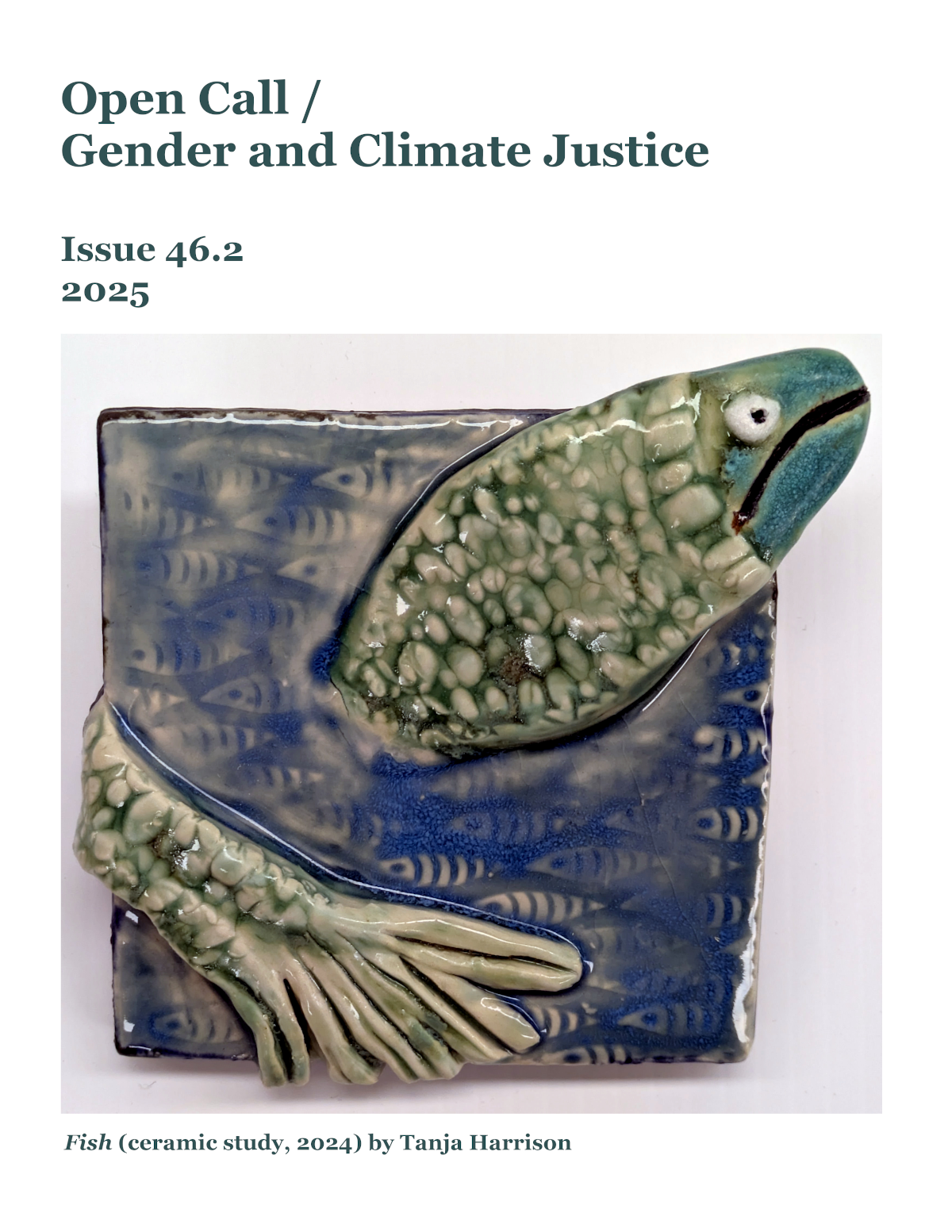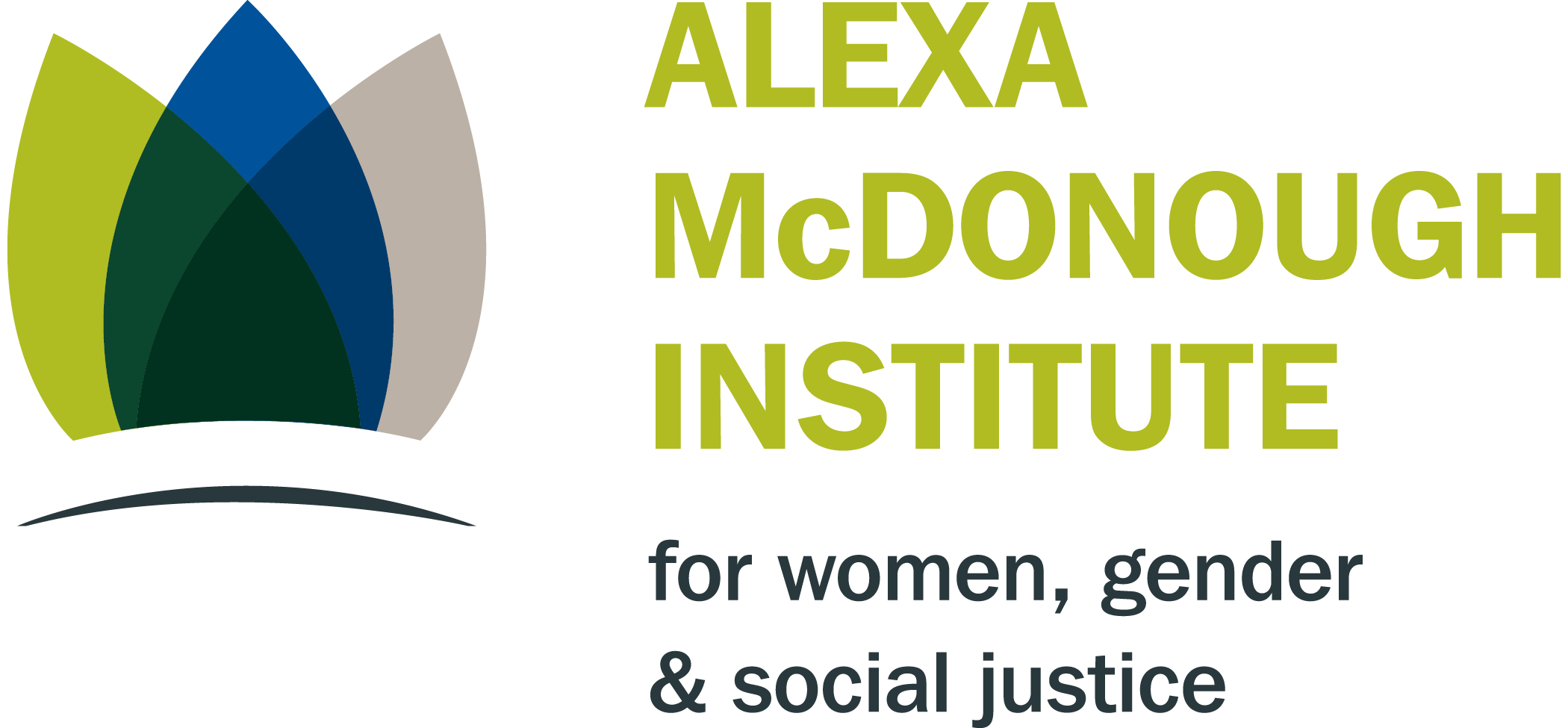Promesses intersectionnelles
Dans quelle mesure le Plan d’action national pour mettre fin à la violence fondée sur le sexe a-t-il bien intégré une approche intersectionnelle?
Mots-clés :
violence fondée sur le sexe, intersectionnalité, analyse des politiques, IBPA, analyse de contenuRésumé
Ce n’est qu’après plus de dix ans de défense des droits des femmes que le gouvernement canadien adopte, le 9 novembre 2022, le Plan d’action national (PAN) pour mettre fin à la violence fondée sur le sexe (VFS). Cette étude est l’une des premières à retracer l’évolution du PAN et à en faire une critique. Plus précisément, j’examine dans quelle mesure le PAN repose sur une approche intersectionnelle. En utilisant la version adaptée de l’analyse des politiques fondée sur l’intersectionnalité (IBPA) ainsi qu’une analyse qualitative de contenu, je soutiens que le PAN récemment adopté repose sur une définition édulcorée de l’intersectionnalité et néglige le rôle des politiques existantes dans la reproduction des inégalités sociales. Le PAN ne fait pas entendre la voix des personnes les plus touchées et ne démontre pas une compréhension approfondie des causes et des effets systémiques de la VFS, qui se traduisent par des besoins intersectionnels différents selon les groupes à risque. Par conséquent, le PAN propose des solutions symboliquement intersectionnelles qui ne seront probablement pas efficaces pour lutter contre la VFS. De plus, le PAN s’appuie sur des données non intersectionnelles pour évaluer les progrès réalisés, et il ne comporte pas de mécanismes intégrés permettant une participation significative des groupes les plus touchés. De ce fait, le PAN actuel ne sera pas en mesure de concrétiser la vision d’un Canada exempt de VFS.
Références
Ahmed, Sara. 2016. “How Not to do Things with Words.” Wagadu: A Journal of Transnational Women’s and Gender Studies 16: 1-10.
_____. 2018. “Rocking the Boat: Women of Color as Diversity Workers.” In Dismantling Race In Higher Education: Racism, Whiteness and Decolonising the Academy edited by Jason Arday and Heidi Safia Mirza, 331-348. Cham: Springer International Publishing. doi.org/10.1007/978-3-319-60261-5
Altheide, David L., and Christopher J. Schneider. 2013. Qualitative Media Analysis. Second Edition, 55 City Road, London: SAGE Publications Ltd. https://doi.org/10.4135/9781452270043.
Bilge, Sirma. 2012. “Intersectionality Undone: Saving Intersectionality from Feminist Intersectionality Studies.” Du Bois Review: Social Science Research on Race 10(2):405–24. doi.org/10.1017/S1742058X13000283.
Bowleg, Lisa. 2008. “When Black + Lesbian + Woman ≠ Black Lesbian Woman: The Methodological Challenges of Qualitative and Quantitative Intersectionality Research.” Sex Roles 59(5-6): 312–25. doi.org/10.1007/s11199-008-9400-z.
_____ 2012. “The Problem With the Phrase Women and Minorities: Intersectionality—an Important Theoretical Framework for Public Health.” American Journal of Public Health 102(7): 1267–73. doi.org/10.2105/AJPH.2012.300750.
Carastathis, Anna. 2016. Intersectionality: Origins, Contestations, Horizons. University of Nebraska Press. https://doi.org/10.2307/j.ctt1fzhfz8.
Carbado, Devon W. and Cheryl I. Harris. 2019. “Intersectionality At 30: Mapping The Margins Of Anti-Essentialism, Intersectionality, And Dominance Theory.” Harvard Law Review 132:2193
Cho, Sumi, Kimberlé Williams Crenshaw, and Leslie McCall. 2013. “Toward a Field of Intersectionality Studies: Theory, Applications, and Praxis.” Signs: Journal of Women in Culture and Society 38(4): 785–810. doi.org/10.1086/669608.
Christoffersen, Ashlee. 2023. “Applying Intersectionality in Policy and Practice: Unseating the Dominance of Gender in Responding to Social Inequalities.” Sozialpolitik.Ch 1(1-13). https://doi.org/10.18753/2297-8224-4030.
Cole, Elizabeth R., and Lauren E. Duncan. 2023. “Better Policy Interventions through Intersectionality.” Social Issues and Policy Review 17(1): 62–78. doi.org/10.1111/sipr.12090.
Collins, Patricia Hill. 2015. “Intersectionality’s Definitional Dilemmas.” Annual Review of Sociology 41(1): 1–20. doi.org/10.1146/annurev-soc-073014-112142.
Collins, Patricia Hill and Sirma Bilge. 2020. Intersectionality, 2nd Edition. Polity Press.
Crenshaw Kimberlé W. 1989. “Demarginalizing the Intersection of Race and Sex: A Black Feminist Critique of Antidiscrimination Doctrine, Feminist Theory and Antiracist Politics.” University of Chicago Legal Forum 139-168
_____. 1991. “Mapping the Margins: Intersectionality, Identity Politics, and Violence against Women of Color.” Stanford Law Review 43(6): 1241-1299 https://www.jstor.org/stable/1229039
Dale, Amanda, Krys Maki, and Rotbah Nitia. 2021. Roadmap for the National Action Plan on Violence Against Women and Gender-Based Violence. A Report to Guide the Implementation of a National Action Plan on Violence Against Women and Gender-Based Violence. Women’s Shelters Canada Ottawa, ON. https://nationalactionplan.ca/#_thereport
Day, Aviah Sarah and Aisha K Gill. 2020. “Applying intersectionality to partnerships between women’s organizations and the criminal justice system in relation to domestic violence.” British Journal of Criminology 60: 830-850. doi.org/10.1093/bjc/azaa003
Di Matteo, Claudia. 2022. “The Institutionalization of Gender-Based Violence (GBV) and Migrant Women’s Access to Social Protection System in Advanced Welfare Societies.” About Gender: International Journal of Gender Studies 11(22): 66-108. doi.org/10.15167/2279-5057/AG2022.11.22.2032
Dubrow, Joshua K., and Corina Ilinca. 2019. “Quantitative Approaches to Intersectionality: New Methodological Directions and Implications for Policy Analysis.” In The Palgrave Handbook of Intersectionality in Public Policy, edited by Olena Hankivsky and Julia S. Jordan-Zachery, 195–214. The Politics of Intersectionality. Cham: Springer International Publishing. doi.org/10.1007/978-3-319-98473-5_8.
Garcia, Teresa C., and Anna Zajicek. 2022. “Incorporating Intersectionality in Public Policy: A Systematic Literature Review.” Humanity & Society 46(2): 271–90. doi.org/10.1177/0160597620988591.
Gotell, Lise. 2023. “Policy Discourses on Sexual Violence: From the Royal Commission to the (Post-) Neoliberal State.” In Feminism’s Fight: Challenging Politics and Policies in Canada since 1970 edited by Barbara Cameron and Meg Luxton, 153-176. University of British Columbia Press. doi.org/10.59962/9780774868051-007
Gopaldas, Ahir. 2013. “Intersectionality 101.” Journal of Public Policy and Marketing 32: 90–94. doi.org/10.1509/jppm.12.044
Grace, Daniel. 2014. Intersectionality-Informed Mixed Methods Research: A Primer. The Institute for Intersectionality Research & Policy, SFU. https://www.ktpathways.ca/resources/intersectionality-informed-mixed-methods-research-primer
Grand’Maison, Valérie. 2024. “Resisting Invisibility in Healthcare Responses to Gender-based Violence: A Content Analysis.” Health Sociology Review 33(2): 144-159 doi.org/10.1080/14461242.2024.2350510
Grant, Tavia, Molly Hayes and Elizabeth Renzetti. 2022. “Where is Canada’s national action plan to end gender-based violence?” The Globe and Mail. May 25. https://www.theglobeandmail.com/canada/article-where-is-canadas-national-action-plan-to-end-gender-based-violence/
Hankivsky, Olena (Ed.) 2012. An Intersectionality-Based Policy Analysis Framework. Vancouver, BC: Institute for Intersectionality Research and Policy, Simon Fraser University.
Hankivsky, Olena, and Renee Cormier. 2011. Intersectionality and Public Policy: Some Lessons from Existing Models. Political Research Quarterly 64(1): 217–229 doi: 10.1177/1065912910376385
Hankivsky, Olena, and Julia S. Jordan-Zachery. 2019. “Introduction: Bringing Intersectionality to Public Policy.” In The Palgrave Handbook of Intersectionality in Public Policy, edited by Olena Hankivsky and Julia S. Jordan-Zachery, 1–28. The Politics of Intersectionality. Cham: Springer International Publishing. doi.org/10.1007/978-3-319-98473-5_1.
Henriksen, Lena, Sezer Kisa, Mirjam Lukasse, Eva Marie Flaathen, Berit Mortensen, Elisabeth Karlsen, and Lisa Garnweidner-Holme. 2023. “Cultural Sensitivity in Interventions Aiming to Reduce or Prevent Intimate Partner Violence During Pregnancy: A Scoping Review.” Trauma, Violence, and Abuse 24(1): 97–109. doi.org/10.1177/15248380211021788.
Jackson, Jessi Lee. 2018. “The Non-Performativity of Implicit Bias Training.” Radical Teacher: A Socialist, Feminist, and Anti-Racist Journal on the Theory and Practice of Teaching, 112: 46-54. doi.org/10.5195/rt.2018.497.
“Joint Statement on the Release of the National Action Plan to End Gender-Based Violence.” 2023. End Violence Against Women | Women’s Shelters Canada, March 17. https://endvaw.ca/archives/news/joint-statement-on-the-release-of-the-national-action-plan-to-end-gender-based-violence/
Krippendorff, Klaus. 2019. Content Analysis: An Introduction to Its Methodology. Fourth Edition, Thousand Oaks, CA: SAGE Publications, Inc. doi.org/10.4135/9781071878781.
LaMartine, Samantha, Nadine Nakamura, and James J. García. 2023. “‘Even the Officers Are in on It:’ Black Transgender Women’s Experiences of Violence and Victimization in Los Angeles.” Women and Therapy 46(2): 103–29. doi:10.1080/02703149.2023.2226012.
Manning, Susan M., and Leah Levac. 2022. “The Canadian Impact Assessment Act and Intersectional Analysis: Exaggerated Tensions, Fierce Resistance, Little Understanding.” Canadian Public Administration 65(2): 242–60. doi.org/10.1111/capa.12458.
Mirza, Heidi Safia. 2022. “‘A Vindication of the Rights of Black Women’: Black British Feminism Then and Now.” In The Palgrave Handbook of Critical Race and Gender, edited by Shirley Anne Tate and Encarnación Gutiérrez Rodríguez, 189–207. Cham: Springer International Publishing. https://doi.org/10.1007/978-3-030-83947-5_10.
Nash, Jennifer. 2019. “CODA.: Some of Us Are Tired.” In Black Feminism Reimagined: After Intersectionality, 133–38. Duke University Press. https://doi.org/10.2307/j.ctv111jhd0.9.
Roberts, Dorothy, and Sujatha Jesudason. 2013. “Movement Intersectionality: The Case of Race, Gender, Disability, and Genetic Technologies.” Du Bois Review: Social Science Research on Race 10(2): 313–28. doi.org/10.1017/S1742058X13000210.
Rezai-Rashti, Goli, Bailing Zhang, Shirin Abdmolaei, Allison Segeren. 2021. A Critical Policy Analysis of the Ontario Equity and Inclusive Strategy: The Dynamics of Non-Performativity. johepal. 2(4), 7-25. doi:10.52547/johepal.2.4.7
Tate, Shirley Anne. 2022. From Post-Intersectionality to Black Decolonial Feminism: Black Skin Affections (1st ed.). Routledge. doi.org/10.4324/b23223
Walby, S., J. Armstrong, and S. Strid. 2012. “Intersectionality and the Quality of the Gender Equality Architecture.” Social Politics: International Studies in Gender, State & Society 19(4): 446–81. doi.org/10.1093/sp/jxs015.
WAGE (Women and Gender Equality Canada). 2022a. National Action Plan to End Gender-Based Violence Backgrounder. Accessed November 12, 2024. https://www.canada.ca/en/women-gender-equality/news/2022/11/national-action-plan-to-end-gender-based-violence-backgrounder.html
WAGE (Women and Gender Equality Canada). 2022b. “National Action Plan to End Gender-Based Violence.” Government of Canada. Accessed December 23, 2023. https://www.canada.ca/en/women-gender-equality/gender-based-violence/intergovernmental-collaboration/national-action-plan-end-gender-based-violence/first-national-action-plan-end-gender-based-violence.html
Téléchargements
Publié
Numéro
Rubrique
Licence
© Olesya Kochkina 2025

Cette œuvre est sous licence Creative Commons Attribution 4.0 International.
Les auteurs qui publient dans cette revue acceptent les conditions suivantes:
1. Les auteurs conservent les droits d’auteur et accordent le droit de première publication à la revue. L’œuvre est simultanément sous licence internationale Creative Commons Attribution 4.0 qui permet à d’autres personnes de la partager en citant dans les remerciements l’auteur de l’œuvre et sa publication initiale dans cette revue.
2. Les auteurs savent que les articles publiés dans Atlantis sont indexés et disponibles par le biais de divers outils de recherche universitaires et professionnels, y compris, entre autres, Erudit.
3. Les auteurs peuvent conclure des ententes contractuelles supplémentaires et distinctes pour la distribution non exclusive de la version de l’article publiée par la revue (c’est-à-dire, l’afficher dans un dépôt institutionnel ou la publier dans un livre), en signalant qu’elle a été initialement publiée dans cette revue.
4. Les auteurs sont autorisés et encouragés à prépublier leur œuvre, c’est-à-dire à la publier en ligne (dans un dépôt institutionnel ou sur leur site Web, par exemple) avant et pendant le processus de soumission. Cela peut conduire à des échanges productifs, ainsi qu’à ce que le travail publié soit cité plus tôt et plus souvent. Renseignez-vous davantage ici sur la prépublication.







